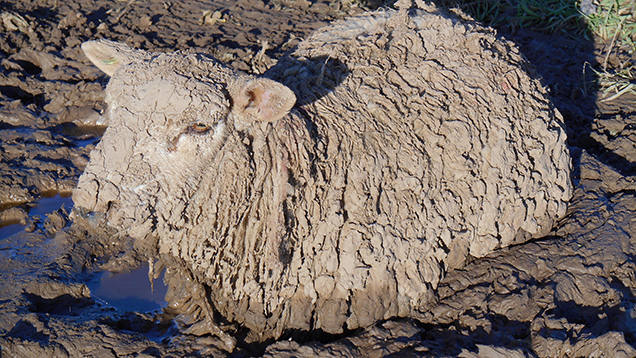Farmer told to pay £18,550 after sheep die in mud
 Photo sent by Lincolnshire County Council
Photo sent by Lincolnshire County Council A farmer who left sheep to die in a muddy marsh has been told to pay fines and costs totalling £18,550.
Courton Green, 56, of Lodge Farm in Laughton, Lincolnshire, was found guilty of causing unnecessary suffering to an animal and leaving a number of dead sheep stuck in mud.
The offence took place in two fields at Surfleet Marsh in February 2014.
Mr Green was found guilty at a hearing in July 2015 and was sentenced on 10 September at Lincoln Magistrates’ Court.
The court heard how in February 2014, Mr Green had kept hundreds of sheep in the two fields.
A number of the sheep had got stuck, some for several days, and some even died in the thick mud.
Inspector Sarah Chambers from the RSPCA told the court how she had expected to see a sheep with its feet stuck in the mud when she was called to attend.
But she described how she saw a sheep’s head sticking out of the ground instead.
“The sends a clear message to those who do not meet basic animal welfare needs – we will continue to take all necessary action to ensure that these acceptable standards of animal care are met”
Dee Stockley, Lincolnshire Trading Standards
She also said there were several dead sheep in the same field.
Dee Stockley, the lead investigating officer from Lincolnshire Trading Standards, also gave evidence.
Ms Stockley said several of the sheep were exhausted from their efforts to free themselves.
Speaking after the sentencing, she said: “The conditions these sheep were kept in fell well below acceptable welfare standards.
“Mr Green was given lots of advice and a number of opportunities to demonstrate that he would comply with the requirements of the animal welfare legislation and achieve the necessary standards of care.”
She added: “He, however, failed to do so and this left us no alternative but to bring this case to court.
“The sends a clear message to those who do not meet basic animal welfare needs – we will continue to take all necessary action to ensure that these acceptable standards of animal care are met.”

